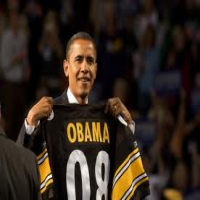'Nationwide Vision' "I'm terrified that someone
Post# of 5428

'Nationwide Vision'
"I'm terrified that someone could get hurt because of this data," says Mike Griffin, a Baltimore auto repossession agent who uses his own fleet of camera-equipped cars to collect about a million plates a month.
Mr. Griffin says he takes extensive security measures with the data, which he contributes to a private national database.
These private databases, each containing hundreds of millions of plates, could become the largest collection of people's movements within the U.S., says Mary Ellen Callahan, former chief privacy officer for the Department of Homeland Security. "You could have a nationwide vision of where I was at a given time," says Ms. Callahan, who now runs the privacy practice at law firm Jenner & Block.
Law-enforcement officers say they use the technology to track down stolen cars, collect unpaid tickets and identify the vehicles of suspected criminals.
The two private plate-tracking companies identified by the Journal both say they act responsibly and are within their rights to collect the data. Scott A. Jackson, founder of MVConnect LLC, the parent company of one of the two firms, says he won't sell the data to the public or to marketers.
He says the plate trackers are simply shooting video in public, something that is perfectly legal. "I take absolute exception to any government telling me that I can't go into public and take video," Mr. Jackson says. "That's taking my freedoms away." He estimates his company has snapped "hundreds of millions" of photos of plates nationwide.
License-plate readers spread in the late 1960s, when film cameras were installed at some intersections to identify red-light runners. Since then, the cameras, software and computer storage have improved, and prices have fallen. This makes storing and working with large license-plate photo databases affordable and realistic.
The price of one gigabyte of storage fell to $1.68 this year from $18.95 in 2005, a decline of 91%, according to market-research firm IDC. It is expected to cost just pennies in a few years. Similarly, digital cameras and the software that can "read" letters and numbers from photos are improving dramatically.
Italian defense contractor Finmeccanica SpA introduced plate-recognition cameras to the U.S. in 2004 via its subsidiary, Elsag North America. The technology originally was used to sort mail by reading addresses. Today, a standard two-camera system mounted on a police car costs $15,000, down from $25,000 originally, says Mark Windover, Elsag's chief executive.
 (0)
(0) (0)
(0)